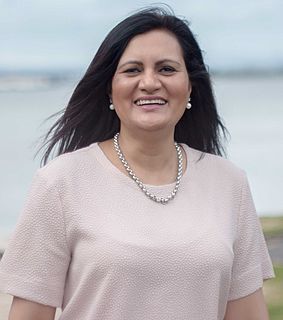Related Research Articles

Osteoporosis is a systemic skeletal disorder characterized by low bone mass, micro-architectural deterioration of bone tissue leading to bone fragility, and consequent increase in fracture risk. It is the most common reason for a broken bone among the elderly. Bones that commonly break include the vertebrae in the spine, the bones of the forearm, and the hip. Until a broken bone occurs there are typically no symptoms. Bones may weaken to such a degree that a break may occur with minor stress or spontaneously. After the broken bone heals, the person may have chronic pain and a decreased ability to carry out normal activities.

Bisphosphonates are a class of drugs that prevent the loss of bone density, used to treat osteoporosis and similar diseases. They are the most commonly prescribed drugs used to treat osteoporosis. They are called bisphosphonates because they have two phosphonate groups. They are thus also called diphosphonates.

Paget's disease of bone is a condition involving cellular remodeling and deformity of one or more bones. The affected bones show signs of dysregulated bone remodeling at the microscopic level, specifically excessive bone breakdown and subsequent disorganized new bone formation. These structural changes cause the bone to weaken, which may result in deformity, pain, fracture or arthritis of associated joints.

Zoledronic acid, also known as zoledronate and sold under the brand name Zometa by Novartis among others, is a medication used to treat a number of bone diseases. These include osteoporosis, high blood calcium due to cancer, bone breakdown due to cancer, Paget's disease of bone and Duchenne muscular dystrophy (DMD). It is given by injection into a vein.

Osteopenia, known as "low bone mass" or "low bone density", is a condition in which bone mineral density is low. Because their bones are weaker, people with osteopenia may have a higher risk of fractures, and some people may go on to develop osteoporosis. In 2010, 43 million older adults in the US had osteopenia. Unlike osteoporosis, osteopenia does not usually cause symptoms, and losing bone density in itself does not cause pain.

The Rutherford Medal is the most prestigious award offered by the Royal Society of New Zealand, consisting of a medal and prize of $100,000. It is awarded at the request of the New Zealand Government to recognize exceptional contributions to the advancement and promotion of public awareness, knowledge and understanding in addition to eminent research or technological practice by a person or group in any field of science, mathematics, social science, or technology. It is funded by the New Zealand government and awarded annually.
Sir Albert William Liley was a New Zealand medical practitioner, renowned for developing techniques to improve the health of foetuses in utero.

Osteocalcin, also known as bone gamma-carboxyglutamic acid-containing protein (BGLAP), is a small (49-amino-acid) noncollagenous protein hormone found in bone and dentin, first identified as a calcium-binding protein in chick bone.

Ibandronic acid is a bisphosphonate medication used in the prevention and treatment of osteoporosis and metastasis-associated skeletal fractures in people with cancer. It may also be used to treat hypercalcemia. It is typically formulated as its sodium salt ibandronate sodium.

Denosumab is a human monoclonal antibody for the treatment of osteoporosis, treatment-induced bone loss, metastases to bone, and giant cell tumor of bone.
The American Society for Bone and Mineral Research (ASBMR) is a professional, scientific and medical society established in 1977 to promote excellence in bone and mineral research and to facilitate the translation of that research into clinical practice. The ASBMR has a membership of nearly 4,000 physicians, basic research scientists, and clinical investigators from around the world.
The Marsden Medal is a yearly award given by the New Zealand Association of Scientists. It is named after Sir Ernest Marsden and honours "a lifetime of outstanding service to the cause or profession of science, in recognition of service rendered to the cause or profession of science in the widest connotation of the phrase." It rivals the Rutherford Medal from the Royal Society of New Zealand.
The Australian and New Zealand Bone and Mineral Society (ANZBMS) is a not-for-profit collegiate organisation and principal professional body for scientists and clinicians involved in bone and mineral metabolism research in Australia and New Zealand.

Kushmiita Parmjeet Kaur Parmar is a New Zealand politician who was elected to the New Zealand parliament at the 2014 general election as a representative of the New Zealand National Party and became the first Indian-born woman to become a Member of the New Zealand Parliament. She was appointed as the Opposition Spokesperson for Research, Science and Innovation from 3 November 2017, and Statistics on 16 July 2020 and Opposition Associate Spokesperson for Economic Development on 12 March 2018. She was made the Chairperson of the Education and Workforce Select Committee in her second term from 14 May 2018 to until the end of that term and the Deputy Chairperson of the Transport and Industrial Relations Select Committee in her first term.

Bone marrow adipose tissue (BMAT), sometimes referred to as marrow adipose tissue (MAT), is a type of fat deposit in bone marrow. It increases in states of low bone density -osteoporosis, anorexia nervosa/ caloric restriction, skeletal unweighting such as that which occurs in space travel, and anti-diabetes therapies. BMAT decreases in anaemia, leukaemia, and hypertensive heart failure; in response to hormones such as oestrogen, leptin, and growth hormone; with exercise-induced weight loss or bariatric surgery; in response to chronic cold exposure; and in response to pharmacological agents such as bisphosphonates, teriparatide, and metformin.
Deborah Lucy Hay is a New Zealand academic. In 2022 she was elected a Fellow of the Royal Society Te Apārangi.
Matire Louise Ngarongoa Harwood is a New Zealand trainee general practitioner and clinical researcher of Ngāpuhi descent. She is an associate professor at the University of Auckland. Harwood was the 2017 New Zealand L'Oréal UNESCO For Women in Science Fellow. Her expertise is in Māori health, focussed on reducing health inequity by improving indigenous health and well-being.
Papaarangi Mary-Jane Reid is a New Zealand public health academic of Te Rarawa descent and, as of 2019, is a full professor at the University of Auckland.
Bruce William Hayward is a New Zealand geologist, marine ecologist, and author. He is known as a leading expert on living and fossil foraminifera.
Rendell Ian McIntosh is a New Zealand historian and former track athlete. He won three national athletics championship titles and represented his country at the 1974 British Commonwealth Games in the 400 metres hurdles. He later instigated the running of the Auckland Marathon across the Auckland Harbour Bridge, and became the manager of the historic house Alberton in the Auckland suburb of Mount Albert.
References
- 1 2 "Professor Jillian Cornish – The University of Auckland". Unidirectory.auckland.ac.nz. Retrieved 2 March 2018.
- ↑ "Dem Bones" (PDF). Eggs.school.nz. Retrieved 2 November 2018.
- ↑ "Item Display – The Role of nephritogenic antigen in the development and maintenance of immune complex glomerulonephritis [microform] : / by Jillian Cornish". Sirsi1.lib.ucalgary.ca. 9 January 1985. Retrieved 2 March 2018.
- ↑ "Our People". Osteoporosis. Retrieved 2 March 2018.
- ↑ "Staff". Cmdt.org.nz. Retrieved 2 March 2018.
- ↑ "Documents The Lens – Free & Open Patent and Scholarly Search". The Lens – Free & Open Patent and Scholarly Search. Retrieved 27 March 2019.
- ↑ "Congratulations to Jillian Cornish, the ASBMR 2014 Paula Stern Achievement Awardee". American Society for Bone and Mineral Research. 23 July 2014. Retrieved 27 March 2019.
- ↑ "Researchers and scholars at the top of their fields elected as Fellows". Royal Society Te Apārangi. 21 November 2019. Retrieved 27 November 2019.
- ↑ "Our People | Osteoporosis". osteoporosis.org.nz. Retrieved 27 March 2019.
- ↑ "ANZBMS – Office Bearers and Council". www.anzbms.org.au. Retrieved 27 March 2019.
- ↑ "International Society of Bone Morphometry". conference.ifas.ufl.edu. Retrieved 27 March 2019.
- ↑ "IBMS : Editorial Board". www.ibmsonline.org. Retrieved 27 March 2019.